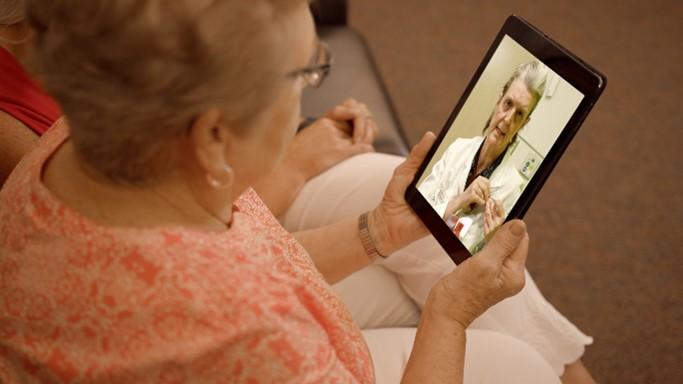‘From 0 to 60’: How One Health System Got Thousands of Patients Started with Telehealth in Days

The COVID-19 pandemic upended how University of Iowa Health Care provided care nearly overnight, and telehealth visits boomed from just a handful in February of 2020 to nearly 2,000 in March. UI Health Care continued to adapt as they prepared for the wave of cases last fall.
“The pandemic forced us to make the jump to telehealth, and we went from 0 to 60 in a matter of days,” said Alison Pauley, who leads UI Health Care’s informatics team. “This was new for providers and patients alike.”
As part of their response to COVID-19, they created a department for flu-like illnesses. During the pandemic, the telehealth department and clinic focus on providing screening, evaluation, management, and follow-up care for patients who suspect having, have been exposed to, or have tested positive for COVID-19. The intent was to keep respiratory illnesses and potential COVID-19 positive patients out of the clinics and to navigate all patients through a telehealth visit and drive-through testing instead. Between March and December of 2020, they completed over 70,000 telehealth visits in this clinic alone. Patients answered questions in MyChart so they can be directed to either a telehealth appointment for treatment or directly to testing if they are asymptomatic but have a known exposure.
UI Health Care works with specialists around the world to share information about the long-term effects of COVID-19 and provide patients with the most up-to-date treatment options, such as focusing on antibody therapy. Video visits allow the clinic to evaluate and follow-up with patients who are sheltering in place so they can continue to receive ongoing care without needing to come into the clinic or hospital. In addition, patients can answer questions about their symptoms in MyChart so providers can follow-up with them outside of scheduled visits if their condition is changing, preventing hospitalizations by intervening sooner if the patient has new or worsening symptoms.
As UI Health Care made the switch to telehealth, many patients had trouble navigating between the separate apps used for scheduling/checking in appointments and the video feed. Providers sometimes gave up on the video technology and switched to phone calls to make sure their patients could complete the visit.
To address this issue, UI Health Care transitioned to integrated video visits, which allows patients, most of whom are new to telehealth, to schedule and completea visit all in one app on their phones or computers. After piloting the new approach in the dedicated respiratory clinic, patients and providers reported a better experience. Other departments are now using it, and more patients successfully complete video visits without converting to a phone call. Before, around 69% of visits were successfully completed; now, around 95% are completed successfully.
Last fall, as the Midwest again faced rising COVID-19 cases, clinics across the region again moved more appointments online. Applying lessons learned from the spring, UI Health Care encouraged patients with chronic conditions to opt for video visits instead of postponing care.
“The face of medicine and how we’ll deliver care has been transformed,” Pauley said. “As we have now pivoted toward COVID-19 treatments and prevention, the UI Health Care teams are focusing efforts on antibody therapy as well as vaccination. These are bringing on new challenges as well as successes. I truly feel that we have a strong foundation in Epic and have incorporated the available technology into practice. We’ll continue to lead change in how we deliver care far beyond the pandemic.”
To learn more about how University of Iowa Health Care rapidly adapted to care for patients with COVID-19 and shifted many visits to telehealth, contact Alison Pauley at alison-pauley@uiowa.edu.
